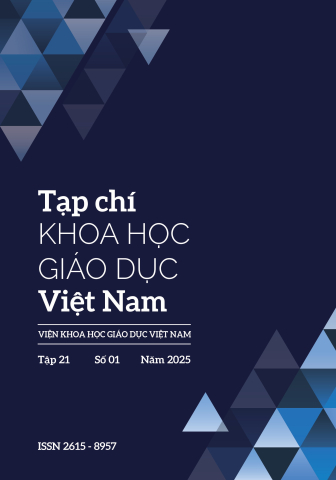Thói quen tư duy hữu hình là một trong những yếu tố góp phần quan trọng giúp người học trở thành người học hiệu quả, người nhận thức đầy đủ về quá trình học tập của chính mình và có thể quản lí cách các em suy nghĩ và học tập. Bài viết nhằm giới thiệu và phân tích khái niệm tư duy, tư duy hữu hình và thói quen tư duy hữu hình. Bài viết nêu bật một số lợi ích mà giáo viên và học sinh có thể có được trong quá trình sử dụng tư duy hữu hình trong lớp học, đồng thời giới thiệu việc đưa thói quen tư duy hữu hình vào giờ học tiếng Anh. Bài viết kết thúc với một số gợi ý để áp dụng tốt hơn các thói quen tư duy hữu hình trong lớp học tiếng Anh.
[1] Perkins, D, (2003), Making thinking visible, Harvard Graduate School of Education.
[2] Dajani, M, (2016), Using Thinking Routines as a Pedagogy for Teaching English as a Second Language in Palestine, Journal of Educational Research and Practice, 6(1), 1-18.
[3] Costa, A. Kallick, B. & Zmuda, A, (2023), Building the school culture with habits of mind, In S.Altan. & J.F. Lane, Mindfulness and Thoughtfulness: Leading and Teaching with Habits of Mind in Research and Practice, pp.45-50, London: Rowman and Littlefield.
[4] Barahal, S.L, (2008), Thinking about thinking. Preservice teachers strengthen their thinking artfully, Phi Delta Kappan, 298-302
[5] Salmon, A.K, (2010), Engaging Young Children in Thinking Routines, Childhood Education, 86(3),132- 137.
[6] Gholam, A, (2019), Student Engagement through Visible Thinking Routines, Athens Journal of Education, 6(1), 53-76.
[7] Ritchhart, R., & Perkins, D, (2008), Making thinking visible, Educational Leadership, 65(5), 57–61.
[8] Moore, K. D, (2015), Effective Instructional Strategies: From Theory to Practice, Sage Publications.
[9] Hull, T., Balca, D.S., & Miles R, H, (2011), Visible thinking in the K8 Mathematics classroom, Corwin and NCTM.
[10] Gholam, A, (2018), Student Engagement through Visible Thinking Routines, Athens Journal of Education, 5(2), 161-172.
[11] Ritchhart, R. & Turner, T. & Hadar, L, (2009), Uncovering students’ thinking about thinking using concept maps, Metacognition Learning, 4, 145–159.
[12] Harvard Project Zero, (2010), Research Projects: Visible thinking, Harvard Graduate School of Education, http://www.pz.harvard. edu/projects/visible-thinking.
[13] Wolberg, R. & Goff, A, (2012), Thinking Routines: Replicating Classroom Practices within Museum Settings, The Journal of Museum Education, 37(1), 59- 68.
[14] Ritchhart, R, (2015), Creating Cultures of Thinking: The 8 Forces We Must Master to Truly Transform Our Schools, Jossey-Bass (A Wiley Brand).
[15] Ritchhart, R., Church, M. & Morrison, K, (2011), Making Thinking Visible: How to Promote Engagement, Understanding, and Independence for All Learners, Jossey-Bass.
[16] Hattie, J, (2012), Visible Learning for Teachers: Maximising Impact on Learning, Routledge/Taylor & Francis Group.
[17] Contreras, L.M., (2020), Visible Thinking Routines in a Fourth Grade Dual Language Classroom: Science and Social Studies, A graduate project submitted in partial fulfillment of the requyrements For the degree of Master of Arts in Education, Elementary Education. California State University, Northridge.
[18] Wach, A. & Monroy, F, (2020), Beliefs about L1 use in teaching English: A comparative study of Polish and Spanish teacher trainees, Language Teaching Research, 24(6), 855-873.
[19] Zwier, L.J, (2012), Inside Reading: The Academic Word List in Context (2nd), Oxford University Press.


